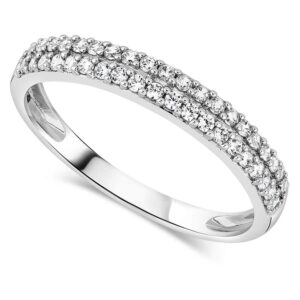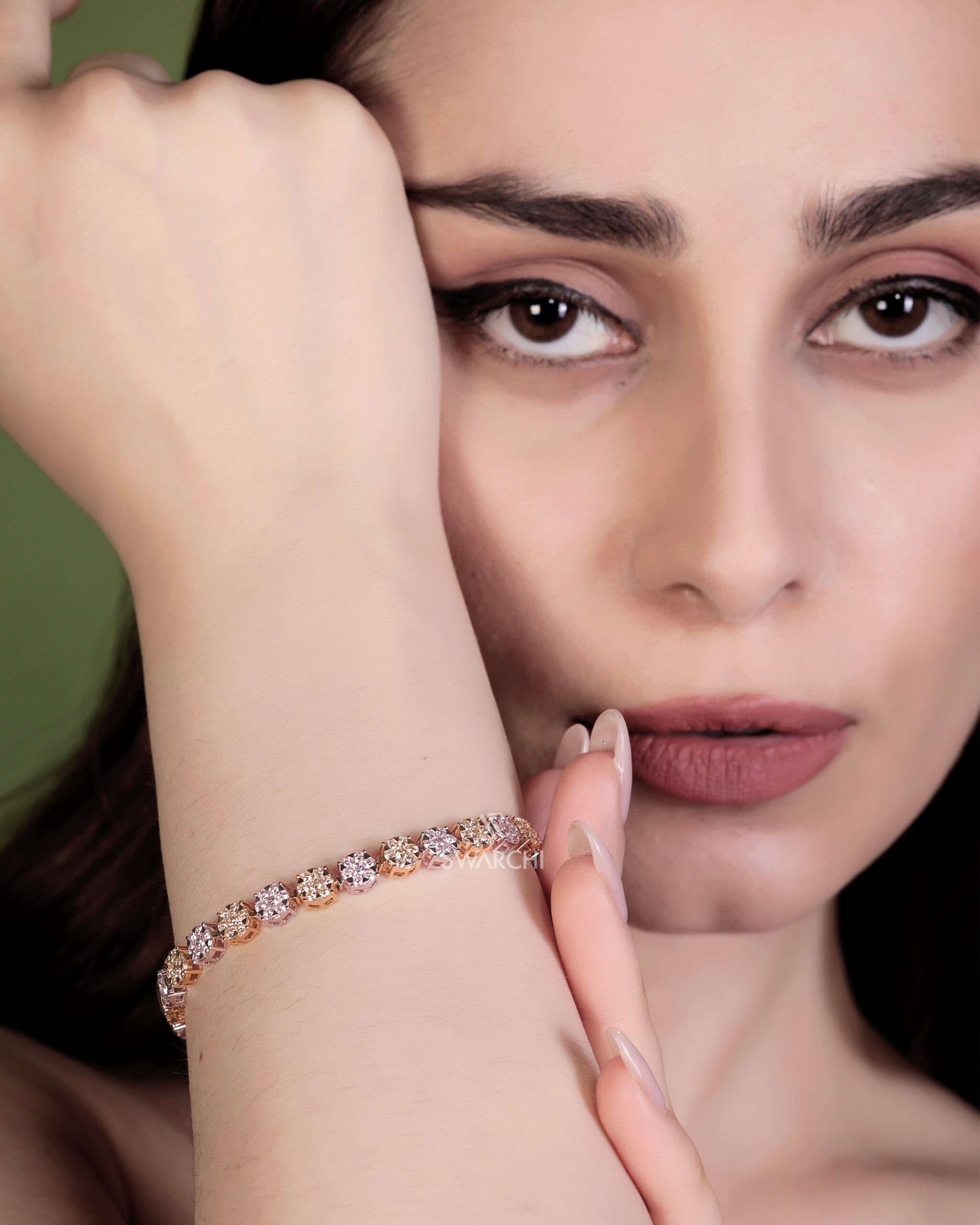Diamond Jewellery Metals
The metal for your diamond jewellery is an important choice. There are plenty of opportunities. From the classic yellow gold to white gold, rose gold or platinum.
It’s important to note the difference between the words “karat” and “carat”. “Karat” denotes a metal’s purity, while “carat” is used exclusively to measure the weight of diamonds and precious gems.
Swarchi jewellery collections offer gold in 14 karat and 18 karat and platinum. 24 karat is considered to be pure gold, however it is typically too soft to use for jewellery.
White Gold
White gold is a precious metal alloy primarily composed of yellow gold mixed with one or more white metals such as nickel, palladium, or platinum. Here are some key points about white gold:
Composition: Typically, white gold consists of about 75% gold (18 karats) and 25% other metals like nickel and zinc, which enhance its durability and color.
Appearance: The alloy gives white gold its distinctive silver-white color, making it a popular choice for jewellery, especially in engagement rings and wedding bands.
Durability: White gold is often coated with rhodium, a metal that increases its shine and scratch resistance, though this plating may require reapplication over time.
Popularity: It was developed as a more affordable alternative to platinum, providing a similar aesthetic while being lighter on the wallet.

Yellow Gold
Yellow gold is one of the most popular types of gold used in jewellery, known for its rich, warm hue. Here are some essential details:
Composition: Yellow gold is primarily made by blending pure gold with other metals like copper, silver, and zinc. This combination retains a vibrant yellow color, making it distinct among gold alloys.
Color Properties: The color can be described as a yellow-orange hue, which can vary in shade depending on the specific alloy composition. It is stable and does not tarnish or corrode under normal conditions.
Uses: Yellow gold is favoured for various types of jewellery, including rings, necklaces, and bracelets, due to its classic appeal and compatibility with a variety of gemstones.
Cultural Significance: Traditionally, yellow gold has been associated with wealth, luxury, and prestige, making it a preferred choice for wedding and engagement rings.

Rose Gold
Rose gold, also known as pink gold, is a popular alloy made from pure gold combined with copper, and sometimes small amounts of silver. Here are the key details:
Composition: Typically, rose gold is created by alloying 24-karat yellow gold with about 25% to 30% copper. The copper gives the alloy its distinctive pinkish hue.
Color Variation: The exact shade of rose gold can vary based on the ratio of gold to copper. More copper results in a deeper red tone, while less copper creates a softer pink.
Durability: The inclusion of copper enhances the metal’s hardness compared to yellow gold, making it more suitable for everyday wear in jewellery.
Popularity: Rose gold has surged in popularity in recent years, often associated with romantic and vintage aesthetics. It is commonly used in rings, bracelets, and necklaces.

Black Gold
Black gold is not a naturally occurring metal but rather gold that has been treated to achieve a blackened appearance. Here are the key points:
Composition: Black gold is typically made from 18K or 22K gold, which is then altered to create its distinctive color.
Manufacturing Process: The black color is usually achieved through methods such as electroplating with black rhodium or using ruthenium, a chemical that darkens the gold.
Aesthetic Appeal: Black gold has gained popularity in jewellery for its edgy and modern look, providing a stark contrast to traditional yellow gold.
Value: Despite its unique color, black gold retains the same intrinsic value as yellow gold, based on its purity and weight.

Platinum
Platinum is a precious, silver-white metal known for its unique properties and rarity. Here are some key details:
Chemical Properties: Platinum is represented by the symbol Pt and has the atomic number 78. It is a transition metal, characterized by high corrosion resistance and a high melting point, which makes it useful in various industrial applications.
Rarity and Value: Platinum is rarer than gold, which contributes to its high market value. It is often used in jewellery and as a material for high-end products.
Uses: Beyond jewellery, platinum is important in various industrial applications, including catalytic converters in automobiles and as a key component in certain chemotherapy drugs for treating cancers.
Physical Properties: This metal is dense, soft, and ductile, making it easy to work with in manufacturing.



